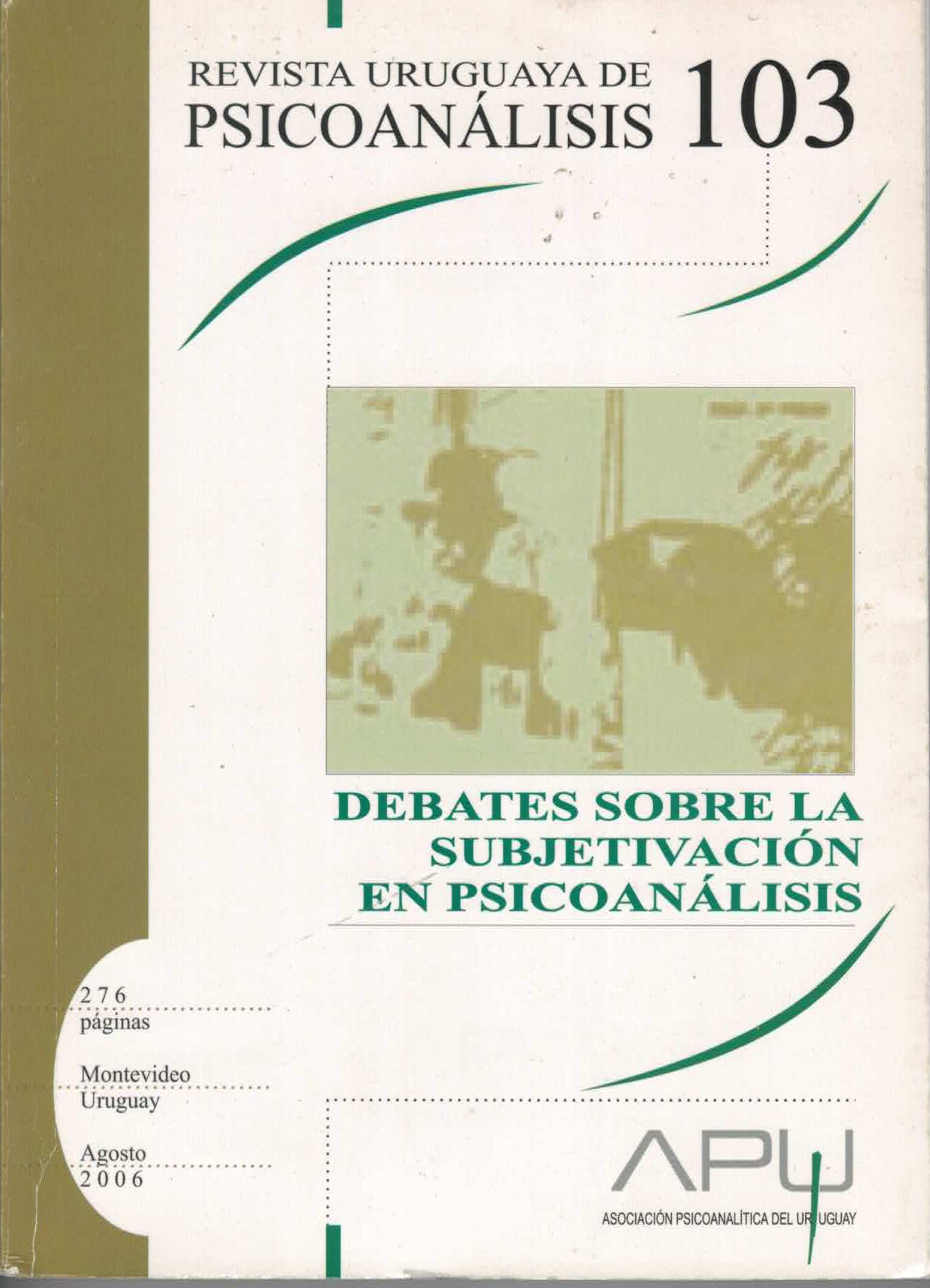The debate begins at the clinic
Keywords:
investigación, proceso psicoanalítico, teoría, contratransferencia, enactment, material clínicoAbstract
Through the analysis of clinical material, the authors – a psychoanalyst and his supervisee – seek to investigate some
concepts used in the psychoanalytic practice, on the understanding that the analytic process happens within a privileged space for the construction of the psychical subject, as well as for the mutual enrichment and subjective exchange between both members of
the analytic couple. In an attempt to promote debate, we addressed ourselves to thinking about three aspects:
1) Theoretical aspects implicit in the psychoanalyst’s mind 2) The issue of interpretation, its validation and testing
3) The therapeutic component of ‘enactment’We consider this conceptual investigation and its debate in a
Congress about subjectivation as an opportunity to reformulate many Freudian propositions, bearing witness to the vital validity
of today’s Psychoanalysis.
Downloads
References
ANDRADE DE AZEVEDO, A. M.(1994): “Validación del proceso clínico psico-analítico: el papel de los sueños”. Int. J. Psycho-Anal (1994),
X, 191.
BARANGER, M (1992) “La mente del analista: de la escucha a la interpretación” R.U.P. 1992.
BARANGER, M.; BARANGER, W.(1961-62): “La situación analítica como campo dinámico”. R.U.P. T. IV, Nº1 (1961.62) p.3-54.
BARANGER, W. (1979): “Proceso en espiral” y “Campo dinámico”.
BEDÓ, T. (1988): “Insight, perlaboración e interpretación”. R.U.P. Nº68.
BEZOARI, M. FERRO, A. (1992): From a play between “parts” to transformations in the couple: psychoanalysis in a bipersonal field.
Ed. By Luciana Nissim Momigliano and Andreina Robutti Ed. Shared experience The Psychoanalytic dialogue. Karnack books London – New
York
BERNARDI, R. (1981) “La diversidad de teorías en Psicoanálisis”. Suplemento de la Revista Uruguaya de Psicoanálisis. Nº 44 1981
(1984) “Diferentes teorías ¿Acerca de los mismos hechos?” Temas de Psicoanálisis. Suplemento de la R.U.P. Nº 3. Mayo de 1984.
(1989) “El poder de las teorías”. Revista de Psicoanálisis. T XLVI, Nº 6 Asociación Psicoanalítica Argentina. NoviembreDiciembre 1989.
(1990) “Teorías e investigación en psicoanálisis: arte y ciencia”. Modelos en psicoanálisis. Jornadas de epistemología y
psicoanálisis. A.P.U. Mayo de 1990.
BLEICHMAR, H. (1999): El cambio terapéutico a la luz de los conocimientos actuales sobre la memoria y los múltiples procesamientos
inconcientes. Nov.2001 Nº 9 www.aperturas.org (2005) Int. J. Psychoanal. 12) CAPER, R. (1994): “¿Qué es un hecho clínico?” Int. J. Psycho – Anal,X, 11.
DE LEÓN de BERNARDI, B. (2005): Narrativa y psicoanálisis:alcances y límites de la palabra. R.U.P. Nº 100 Mayo 2005 p.170-20.
ETCHEGOYEN, H.(1988): “El diálogo psicoanalítico” En psicoanálisis. A.P. de B.A., V. X, Nº 1 (1988).
ETCHEGOYEN, H. (1990): “Sobre la interpretación y su testeo”, En Psicoanálisis A. P. De B. A. Vol. XII, Nº 2-3.
FONAGY, P.(1995): “After the afterthoughts: The conceptualization and communication of clinical facts in Psychoanalysis”. Leído en 75th
Anniversary Conference, Int. J. Of Psycho-Anal, Sao Pablo, Brasil (2 Abril 1995).
JIMÉNEZ, J. P. (in press) After pluralism: Towards a new, integrated psychoanalytic paradigm. Int. Jour. Psycho Anal - (1994), X.
KERNBERG, O. (1994): “Validación en el proceso clínico”. Int J. Psycho – Anal (1994), X, 207.
MANONNI, O. (1980) “Carta del día 24 de setiembre de 1980” en “La diversidad de teorías en psicoanálisis” (seminario libre) Suplemento
de la R.U.P. Nº 44 A.P.U. Mayo 1981.
MORENO, E. (2000) A propósito del concepto de “enactment”. Aperturas psicoanalíticas. Revista de Psicoanálisis. Abril, 2000. Nº4
www.aperturas.org
SPILLIUS, B. E.: “Formulando hechos clínicos al paciente”. Int. J. Psycho – Anal (1994), X, 145.
WALLERSTEIN, R. (1988): One psychoanalysis or many? Int. J.Psyco-Anal.69: 5-21.



 This work is licensed under a
This work is licensed under a 